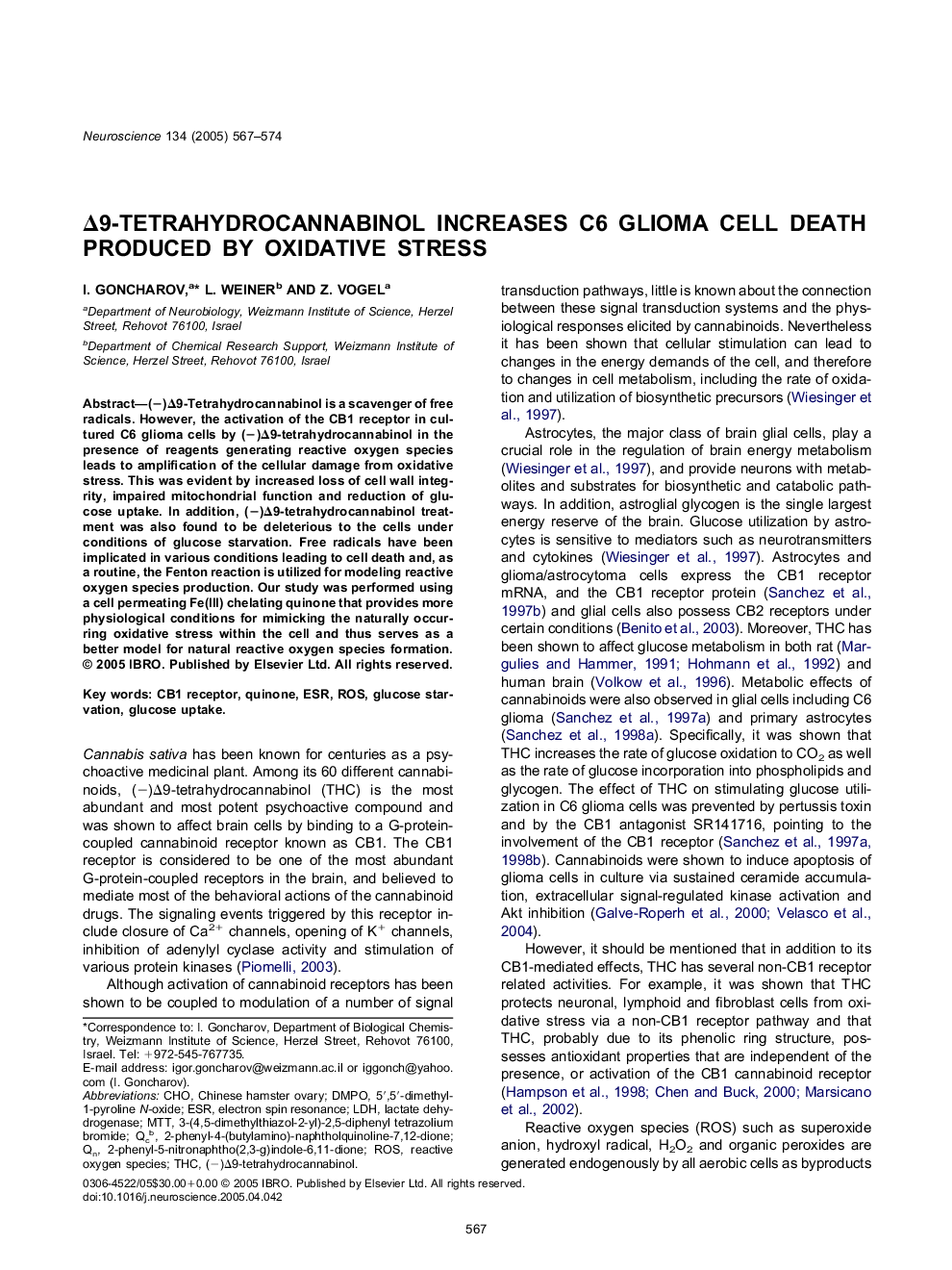| Article ID | Journal | Published Year | Pages | File Type |
|---|---|---|---|---|
| 9425737 | Neuroscience | 2005 | 8 Pages |
Abstract
(â)Î9-Tetrahydrocannabinol is a scavenger of free radicals. However, the activation of the CB1 receptor in cultured C6 glioma cells by (â)Î9-tetrahydrocannabinol in the presence of reagents generating reactive oxygen species leads to amplification of the cellular damage from oxidative stress. This was evident by increased loss of cell wall integrity, impaired mitochondrial function and reduction of glucose uptake. In addition, (â)Î9-tetrahydrocannabinol treatment was also found to be deleterious to the cells under conditions of glucose starvation. Free radicals have been implicated in various conditions leading to cell death and, as a routine, the Fenton reaction is utilized for modeling reactive oxygen species production. Our study was performed using a cell permeating Fe(III) chelating quinone that provides more physiological conditions for mimicking the naturally occurring oxidative stress within the cell and thus serves as a better model for natural reactive oxygen species formation.
Keywords
Related Topics
Life Sciences
Neuroscience
Neuroscience (General)
Authors
I. Goncharov, L. Weiner, Z. Vogel,
